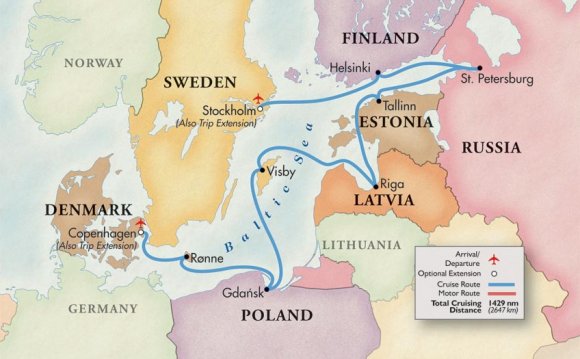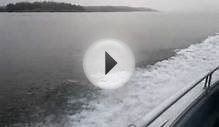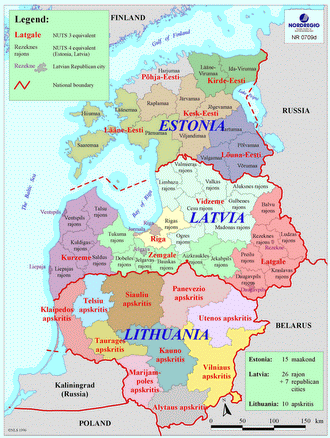
CASE NUMBER: 218 CASE MNEMONIC: BALTIC CASE NAME: Baltic Sea Pollution A. IDENTIFICATION 1. The Issue The health of the Baltic Sea has been seriously damaged since the 1960s due to excessive pollution from the countries in its catchment area. The pollution, such as untreated human waste, toxic materials, and metal (e.g. lead), have resulted in stratification of the Baltic Sea. This process known as stratification has left certain layers of the Baltic mostly freshwater while rendering other layers saltwater. The Baltic Sea, when it is stable, is a mix of freshwater from the rivers of Europe, and saltwater from the North Sea which flows through the straits around Denmark. The source of much of the pollution was, and still is, from the countries of the former Soviet Union and East Bloc. This pollution, in turn, harms a variety of other industries, including fishing and tourism. 2. Description Because of unrestricted and (environmentally) unregulated industry, factory waste was disposed directly into the Baltic Sea or into rivers which fed the Baltic. A second problem is agricultural run-off, all from western European countries. These chemicals run off land and into the water supply, eventually ending up in the Baltic Sea. With the fall of the communist states, central and eastern Europe the issue is now to move towards a collective plan to clean-up the Baltic (see BLACKSEA case). Many positive steps are being taken by the countries which either border on the sea, or are in its catchment area. The most significant of these steps is the Baltic Sea Joint Comprehensive Environment Action Program, which will be described in more detail in the next section. The countries directly effected are the nine which line the Baltic coast: Sweden, Finland, Estonia, Latvia, Lithuania, Russia, Poland, Germany, and Denmark. The catchment area includes Norway, Belarus, Ukraine, the Czech Republic, and the Slovak Republic (see KRAKOW and POLWASTE cases). "[T]he Baltic Sea's rich biodiversity is threatened by environmental pollution that could cause irreversible damage to a sea that is an important source of economic and recreation for more than 80 million people who live along its coast and within its catchment area. The sea is very important to the tourism and fishing industries of the Baltic countries. Species of fish such as herring, sprat, and cod are affected by pollution from urban areas, industries, and agriculture (fertilizers). The goal of the Baltic nations is to reduce the amount of pollution which reaches the Baltic Sea in order to preserve the precious fishing and tourism trade in each country. The Baltics have agreed on a Baltic Sea Joint Comprehensive Environmental Action Program. It was approved by the Diplomatic Conference of Ministers of the Environment in Helsinki, Finland in April, 1992. The program has six components. 1. "[A] set of policy, legal, and regulatory reforms that establish a long-term environmental management framework in each country." 2. "[I]nstitutional strengthening and human resource development." 3. "[A] program for infrastructure investment in specific measures to control point and nonpoint sources of pollution and to minimize and dispose of wastes." 4. "[T]o aid in the management of coastal lagoons and wetlands." 5. "[S]upporting applied research to build the knowledge base needed to develop solutions, transfer technology, and broaden understanding of critical problems." 6. "[W]ill encourage public awareness and environmental education to develop a broad and sustainable base of support for implementation of the other components." The Baltic Sea, the largest body of brackish water (brackish water is slightly salty water) on Earth, was considered healthy as late as the 1950s. Since then, the Baltic's health has seriously deteriorated due to waste from expanding industry and large urban areas, fertilizers used in agriculture, and the development of wetland areas. The fishing and recreation industries have already been affected by the pollution in the Baltic, and action was needed to prevent permanent damage. Recent steps to clean up the Baltic have been made possible with the end of the East-West divide. The 14 countries of the catchment area are now on schedule to carry out a comprehensive program to improve the environment in and around the Baltic Sea. The Baltic is important to these countries for many reasons. Economically, the Baltic is a vacation area for many Europeans. This provides service jobs in tourism and recreation. "The coastal areas also serve as spawning, nursery, and feeding grounds for several species of marine and freshwater fish." Some of the species effected are mentioned above. "The value of the catches, which amounts today to about 540 million European currency units (ECU) per year, is an indication of the considerable economic importance of the Baltic fishery." 3. Related Cases BLACKSEA case JAPANSEA case MEDIT case CASPIAN case POLWASTE case ORESUND...
See also:RELATED VIDEO




 The term Baltic states (also Baltics, Baltic nations or Baltic countries) refers to the Baltic territories which gained independence from the Russian Empire in the wake of World War I: primarily the contiguous trio of Estonia, Latvia, Lithuania (from north to...
The term Baltic states (also Baltics, Baltic nations or Baltic countries) refers to the Baltic territories which gained independence from the Russian Empire in the wake of World War I: primarily the contiguous trio of Estonia, Latvia, Lithuania (from north to...








